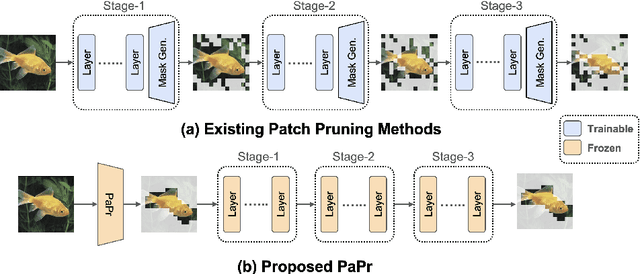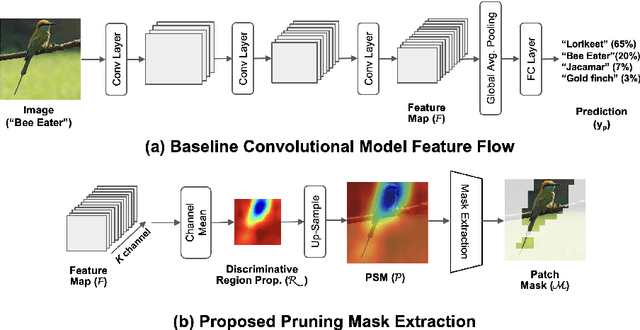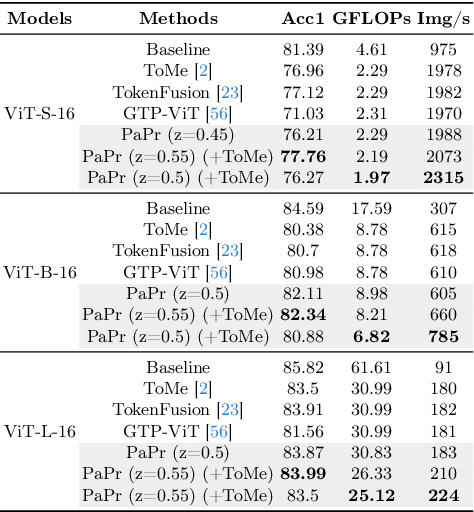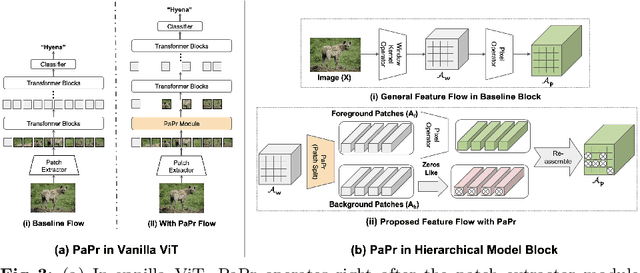PaPr: Training-Free One-Step Patch Pruning with Lightweight ConvNets for Faster Inference
Paper and Code
Mar 24, 2024



As deep neural networks evolve from convolutional neural networks (ConvNets) to advanced vision transformers (ViTs), there is an increased need to eliminate redundant data for faster processing without compromising accuracy. Previous methods are often architecture-specific or necessitate re-training, restricting their applicability with frequent model updates. To solve this, we first introduce a novel property of lightweight ConvNets: their ability to identify key discriminative patch regions in images, irrespective of model's final accuracy or size. We demonstrate that fully-connected layers are the primary bottleneck for ConvNets performance, and their suppression with simple weight recalibration markedly enhances discriminative patch localization performance. Using this insight, we introduce PaPr, a method for substantially pruning redundant patches with minimal accuracy loss using lightweight ConvNets across a variety of deep learning architectures, including ViTs, ConvNets, and hybrid transformers, without any re-training. Moreover, the simple early-stage one-step patch pruning with PaPr enhances existing patch reduction methods. Through extensive testing on diverse architectures, PaPr achieves significantly higher accuracy over state-of-the-art patch reduction methods with similar FLOP count reduction. More specifically, PaPr reduces about 70% of redundant patches in videos with less than 0.8% drop in accuracy, and up to 3.7x FLOPs reduction, which is a 15% more reduction with 2.5% higher accuracy.
 Add to Chrome
Add to Chrome Add to Firefox
Add to Firefox Add to Edge
Add to Edge